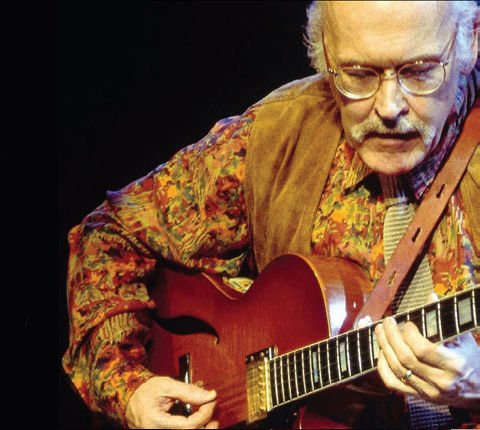[Monday Notes no.46] The most famous work of Spanish composer Joaquin Rodrigo, the Concierto de Aranjuez has also been much appreciated by jazz musicians. I have analysed Jim Hall’s beautiful interpretation.
On the album Sketches of Spain Gil Evans gives an orchestral interpretation with little room for improvisation, whereas in this version arranged by Don Sebesky for Jim Hall’s group he merely defines the framework and leaves much to the creativity of the soloists.
The piece opens with the guitar playing the theme while the double bass plays an evocative tremolo. These instruments are followed first by the trumpet (0’47”) and then the sax (1’27), which plays the theme in the major mode. The theme develops slowly until its climax (3’13”) then the guitar remains alone for a cadenza, as it happens several times in Rodrigo’s original version.
From the silence (3’38”) the instruments re-emerge one by one: bass, drums, guitar and piano, with the latter playing a riff on two chords, Dm7 and A7sus, like this:

The rhythm is binary and swing-free, almost a light rock. The first solo is by band leader Jim Hall (4’02”), followed by Paul Desmond’s sax (6’35”) and Chet Baker’s trumpet (9’12”). The three compete in terms of imagination and freshness of invention. It is a race with no winners, indeed the complicity is total and the passage from one solo to the next is fluid and natural.
Also beautiful is the improvisation by pianist Roland Hanna, who begins with the two hands playing in sixteenth intervals (11’45”). The piano solo is a masterpiece of absolutely perfect chord changes and phrases.

This magic would certainly not be possible without the sober accompaniment of Ron Carter on double bass and Steve Gadd on drums. To appreciate Gadd’s contribution it is worth listening carefully at minute 7’34” to the counterpoint of the snare drum to the sax phrases, and then to the opening of the accompaniment on the cymbal (7’42”). An example of Gadd’s mastery, each of his strokes is measured and absolutely necessary.
In this performance, the musicians find an authentic communion of intent, spiritual before musical, which is necessary for work at this level. The piece also demonstrates that in the 1970s jazz was still able to contaminate itself with other music, in this case Spanish classical music and rock, achieving astonishing results.
Until next Monday!


